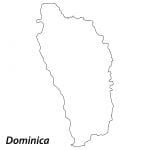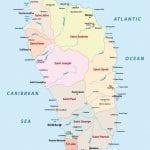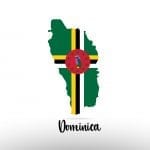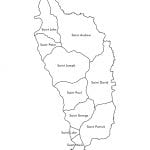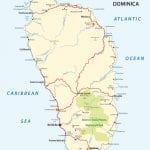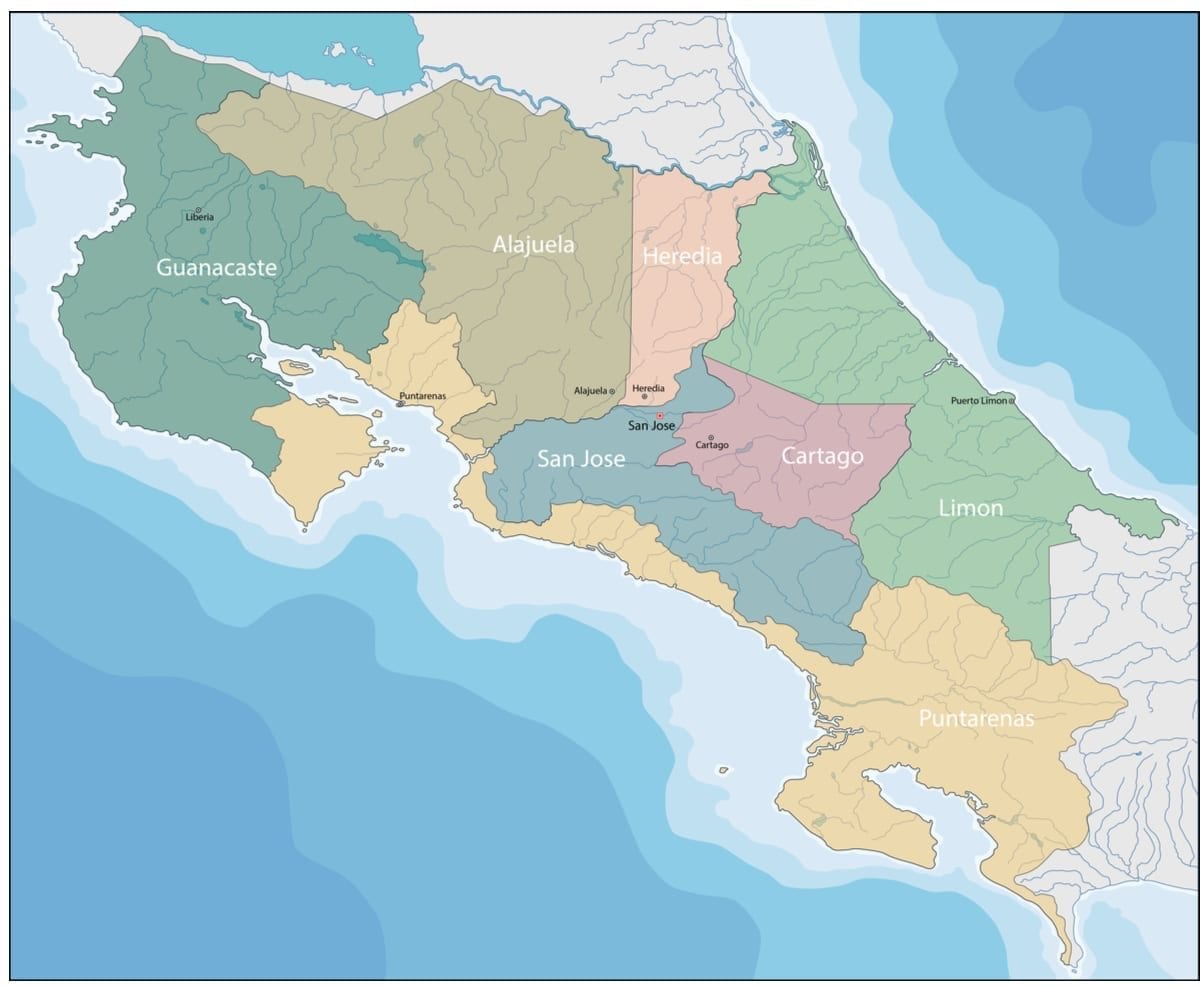
Exploring Dominica is like embarking on a heavenly journey. A sky view of Dominica island is the most blissful sight you will ever have. The greenery, the heart capturing sceneries, the delicious mangoes, visiting Dominica will be the best gift to your soul. So, let us escape the rough and tough routine of modern cities and breathe in the fresh air of Dominica beaches hugged by turquoise splashes of Caribbean waters. Let’s now take a deep dive into the Map of Dominica, Flag Facts, language, population, places to visit, culture and much more. Learn everything about Dominica in a few minutes.
Map of Dominica
Where is Dominica located?
Dominica in world map is a part of the Windward Islands located in the Lesser Antilles region of the Caribbean Sea. Dominica sits in between Guadeloupe and Martinique along the north-south line. Surrounded by sea waters from the eastern and western borders, the map of Dominica in the Caribbean renders it a remarkable position in this archipelago. Check out the attached Dominica map for further details.
Dominica Population density
According to the latest data compiled by the United Nations, the Dominica population is about 72,010. That makes only 0.00092% of the total world population. The country has retained a low growth rate and ranks at 204th position on the official list of countries in the United Nations population data. For the last decade, the yearly change percentage increased from 0.08% in 2010 to 0.22% in 2020. The island spreads across 750 square kilometers with a population density of 96 people per square kilometer. The capital city is Roseau. Around three quarters of the country’s total population reside in urban areas.
Based on ethnic groups, the population has three categories mainly, the blacks, the whites, and the Caribs. The former ones have a majority, second to them are the whites from European lineage. Caribs were natives before European settlements. Descendants from Carib line are a minority in number and reside on eastern Dominica.
Dominica language
English is the official, national, and most spoken language. The communication, education, and all formal protocols are in British English. However, Creole or French Patois, a version of English, French, and African languages is also spoken by an elderly community. Youngsters have less knowledge of Creole. Although the original Carib language is extinct, still a dialect, Garifuna is preserved in some areas. Kokoy, another dialect of Creole, also exists.
Dominica vs Dominican Republic
Do not get confused by the names, the Commonwealth of Dominica is different from the Dominican Republic. Though both are Carib nations, Dominica is in the Lesser Antilles whereas Dominican Republic is in the Greater Antilles. Both of the islands are separated by 1034 km. The Dominican Republic was a Spanish colony and still has Spanish as its official language. Dominica currency (East Caribbean dollar) is also different from that of the Republic (Peso).
Dominica Flag colours and design
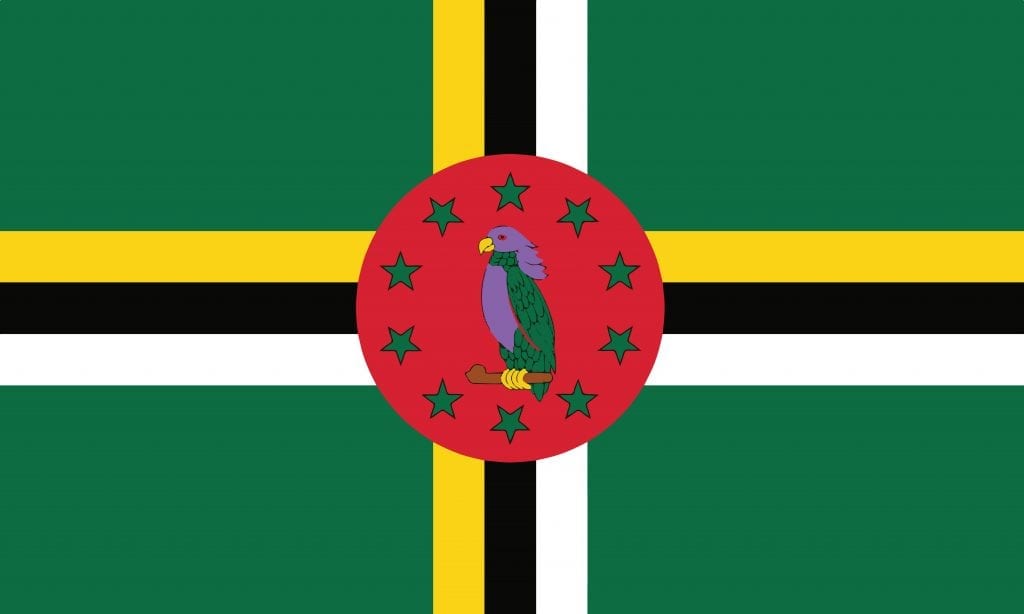
With epic colours and artistic design, this parrot flag is a spectacular one. It has a green background with a tricolour cross having yellow, black and white bands of equal width. Black is sandwiched between yellow and white. A central red disc overshadows the cross mid-point. The Sisserou Parrot surrounded by ten green stars sits inside the loop. The flag proportion is 1:2. Before independence, a British colonial flag was in use. It consisted of the blue ensign with a Dominica coat of arms. Alwin Bully, in 1978, at the time of independence, designed the new national flag. Since then, there have been three modifications in 1981, 1988, and 1990 respectively. These alterations did not disturb the basic pattern but changed minute details as colours sequence in cross and parrot’s face direction.
Dominica Flag Meaning
National flags are an encoded message for a nation’s pride. The colours and the pattern are not a coincidence but have a well-built logic and manifest deep meanings. The Dominica flag portrays a strong message. The greenfield reflects the botanical assets as forests and plantation. The cross is for Christianity, and the three colours inside make a trinity that strengthens its religious outlook. These 3 colours; yellow, black, and white also signal towards the groups of people living on its lands, that is, Caribs, Africans, and Caucasians. Apart from races, cross colours also refer to the country’s fruits (mainly mangoes), soil, rivers and waterfalls. The red disc is a metaphor for justice and socialism. The 10 stars are for its parishes, and the parrot is indigenous to Dominica, a novel species classified as endangered one.
Best of Dominica- some intriguing facts
- Dominica topography is volcanic and has eight to nine volcanoes. These include Morne Patates, Morne Plat Pays, Morne Anglais, Grande Soufriere, Morne Watt, Micotrin, Morne Trois Pitons, and Morne Diablotin. The last eruption was recorded in 1997.
- Sisserou parrot is Dominica’s national bird.
- Carib Wood or ‘Bwa Kwaib’ is the national flower of Dominica. It was a part of the Dominican coat of arms.
- The original name of the island given by native Kalinago people was Wait’tukubuli, meaning “Tall is her body.” When Columbus came here it was Sunday, so, he named it Dominica, meaning ‘’belonging to God.’’
- Slavery in Dominica has been a top trade during colonial times. According to an estimate, about 100,000 slaves got transferred here in the 18th and 19th century.
- Do not underestimate the beauty by just an overlook. As you explore the lands deeply, you will find there are many pleasant-looking rivers where you can enjoy a thrilling boat experience. These rivers also have wild plantations across sides.
Is Dominica worth visiting?
Don’t miss a chance, travel to Dominica for it has the prettiest cities with breathtaking mountains, black sand beaches, hot springs, enchanting rain forests, and all times best water bodies; falls and lakes. Not just parishes but there are so many things to do in Roseau Dominica. Dominica top sights include Boiling Lake, Victoria Falls, Cabrits National Park, and The Carib Territory. Dominican culture is itself an attraction and the reason behind Dominica trips.
Dominica when to go
In the months from October to January and April, the season is less rainy. Dominica hotels are also cheap in these times. From August to October, hurricanes often hit the land.
BOOK HOTEL IN ANY PART OF DOMINICA AT GREAT PRICES

